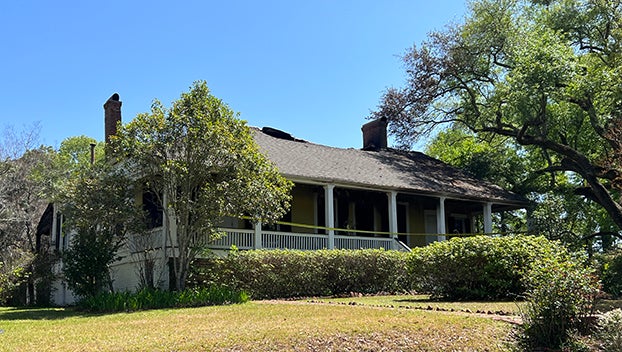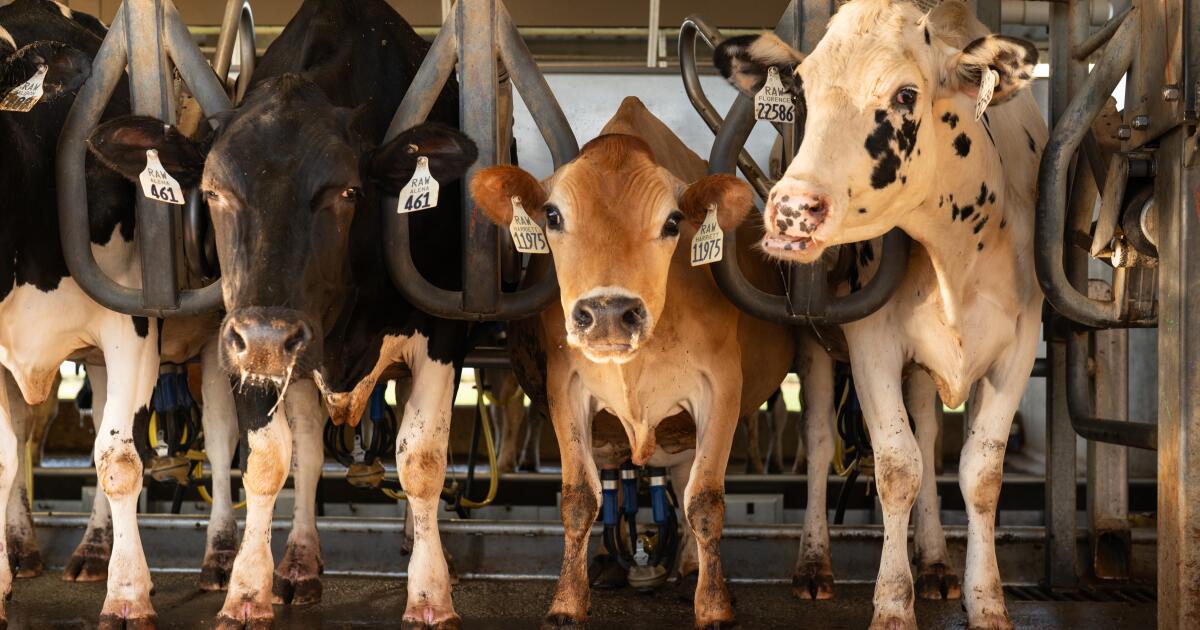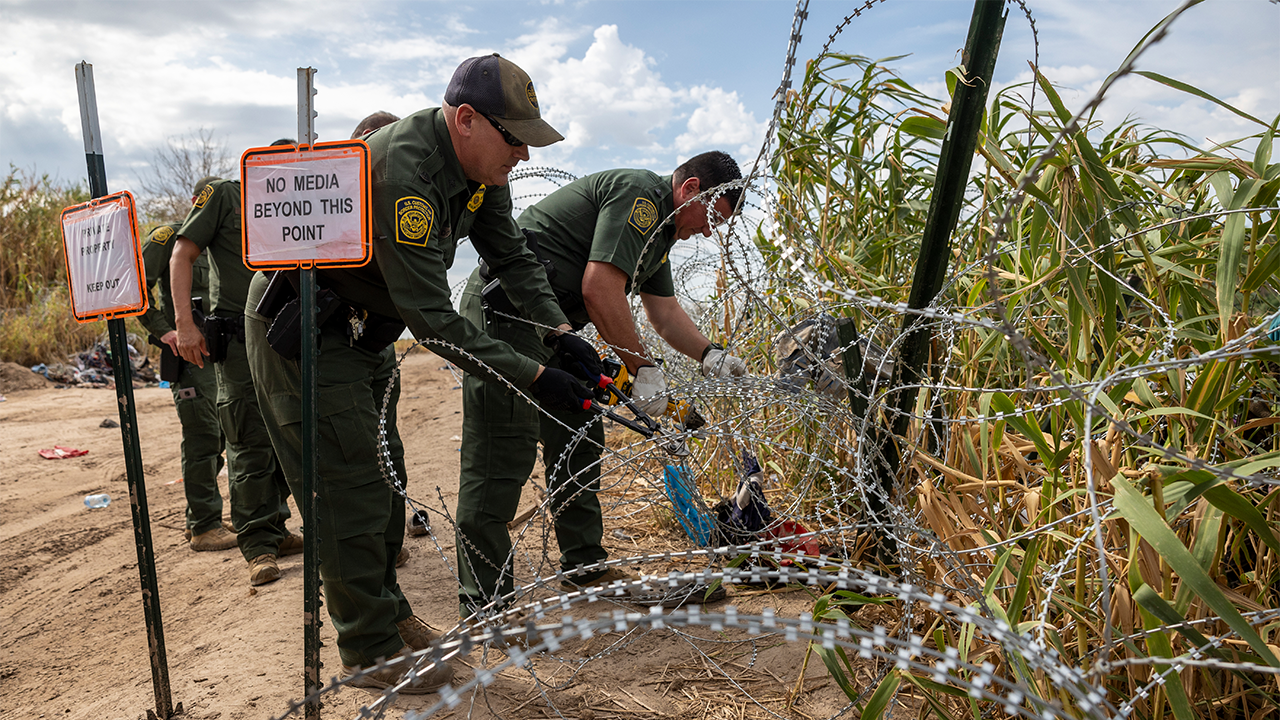Mississippi
RESTORING HOPE: Couple tackling restoration of historic home after fire – Mississippi’s Best Community Newspaper

RESTORING HOPE: Couple tackling restoration of historic home after fire
Published 12:49 pm Friday, July 21, 2023
1 of 2
NATCHEZ —Kevin and Laine Berry have hope for Hope Farm.
The couple, who together have the house restoration and rehabilitation company Our Restoration Nation, has restored a house on Linton Avenue in Natchez and is working with the Historic Natchez Foundation on historic Auburn, which is owned by the City of Natchez.
The Berrys have purchased Hope Farm, one of the oldest structures in Natchez, which burned in March. Hope Farm is located at the corner of Homochitto and Duncan Avenue in Natchez. The home’s owner, Ethel Banta, lost her life in the fire.
Many, including the Berrys, think despite the burn damage, Hope Farm can be saved.
View their announcement video of the Hope Farm project below.
On the couple’s Instagram page is an image of a charred wall and doorway recently posted with a caption to hint at what is to come for the historic house. “People will say it’s a lost cause,” it says. “People will say it’s too far gone. People will say it’s a tear down. We aren’t those people. We say there is Hope. We live in Hope.”
The Berrys have been quietly buying, restoring and reselling houses throughout the region for over 20 years, Laine said.
“We don’t have children, so saving these homes is our way of leaving a legacy,” Laine said. “We do historic restoration and preservation work across the Southeast.”
However, Laine Berry said for them, Hope Farm is more than just a passion project.
After the Arkansas natives also lost a home in the middle of renovation to a tragic fire in Louisville, Georgia, a little more than three years ago, the couple felt they had “unfinished business,” Laine said.
“A huge restoration project we were working on was struck by lightning and it burned to the ground,” she said, adding there was nothing left standing to save. “It was unfinished business.”
Also around that time, the Berrys were invited back to Natchez by Historic Natchez Foundation Executive Director Carter Burns. It had been their first time visiting since they were married over 27 years ago, and fell in love with the city all over again. They returned a year later and bought a house on Linton Avenue almost accidentally, Laine said.
“We’d met several people and fell in love with the community, but at that time, there was nothing really available,” she said. “We came back a year later with no intention of buying a house.”
That was until Kathy Smith introduced them to the house on Linton Avenue, which Laine said is now one of her “favorite streets in the U.S.”
“We saw one little house that looked like it needed love,” she said. “I said if it was that one, we’d take it on. Sure enough, it was.”
They were just finishing up the restoration of the house on Linton Avenue, which they call “Pearl,” when Hope Farm caught fire. The house, once home to Natchez Pilgrimage founder Katherine Grafton Miller and her husband, J. Balfour Miller, was built from 1780 to 1792 and is among the oldest houses in Natchez and the region.
A lot was lost in those embers, including the life of its owner Ethel Banta, who was beloved by the community.
When news of the fire reached the Berrys, they were aware of the house and its significance and quickly reached out to Burns, who connected them with Banta’s children.
“I said, not to be insensitive, if it becomes available and is salvageable, we would like to discuss that opportunity with you,” Laine said. “We met Ms. Ethel’s children and were given the opportunity to take on this restoration of one of the most important properties in the city, not only because of the structure itself but because of the amazing women who lived there.”
Laine said they intend to keep the house once it’s restored.
“We’ve been eyeing Natchez as our retirement home,” she said. “We’ll be back and forth working in Natchez and hopefully retire there.”
Of all of the houses that they’ve looked at and those they’ve personally restored, Hope Farm gives the feeling that it’s “just right” for them, she said.
“Of all the homes on the market, there’s a little something you want to change about all of them. … Only one of those hundreds feels right. Both of us felt that way (about Hope Farm).”
To celebrate the new project, the Berrys are hosting Restoring Hope weekend on Aug. 11 and 12, which includes house tours that Natchez is known for at a discounted rate and special receptions.
Laine clarified that this is not a fundraiser but an opportunity to promote Natchez to those who’ve never visited, with over 100 guests who’ve followed the Berrys journey already expected to come from all over the U.S. and some in Canada.
“Many of these are people who’ve never been in the South, much less Mississippi,” Laine said.
The culmination of the weekend is the reception for the Hope Farm restoration, scheduled for 8 p.m. Saturday, Aug. 12. The Berrys are also having another welcome reception at Auburn at 6:30 p.m. Friday, Aug. 11, which is free to the public, Laine said. They’ve created a 501(c)3 for the Auburn restoration, which remains a city property and are in the process of building a new website specifically dedicated to that project.
An entire package that includes all of the tours and reception can be purchased for $250, or guests can piece together their own weekend however they like. Just the reception ticket by itself is $65.
“Don’t expect anything to happen quickly,” Laine said of both the Auburn and Hope Farm projects. “We don’t put a timeline. It just puts undue stress on it. We try to save as much from the landfill as we can and that takes time. We try to keep things as historically accurate as possible and that takes time.”
Learn more at ourrestorationnation.com.

Mississippi
Minor earthquake recorded in Mississippi on Thanksgiving

MADISON COUNTY, Miss. (WJTV) – A minor earthquake was recorded in Mississippi early Thanksgiving morning.
According to the United States Geological Survey (USGS), the 2.5-magnitude earthquake occurred southeast of Canton near the Ross Barnett Reservoir around 1:48 a.m. on Thursday, November 28.
Officials with the Michigan Technological University said earthquakes below 2.5-magnitude are “generally not felt.” So far, there are no reports of any damage in Madison County.
The last earthquake that occurred in Madison County was a 2.8-magnitude earthquake in 2019.
Mississippi
Thanksgiving on Mississippi Public Broadcasting Think Radio, set to air on Thursday, November 28th

MISSISSIPPI (KTVE/KARD) — For Thanksgiving, on Thursday, November 28, 2024, the Mississippi Public Broadcasting Radio will air a special programming.
Photo courtesy of Mississippi Public Broadcasting
According to officials, “Turkey Confidential” and “Feasting with the Great American Songbook: An Afterglow Thanksgiving Special” will run from 9 a.m. to 1 p.m. Francis Lam will be taking calls and help those in need of Thanksgiving cooking tips for the biggest cooking day of the year.
According to officals, “Feasting with the Great American Songbook: An Afterglow Thanksgiving Special” will explore classic jazz and popular songs about food by singers like Louis Armstrong, Louis Jordan, and Fats Waller, perfect for listening while sitting at the table.
Mississippi
Southeast Mississippi Christmas Parades 2024 | WKRG.com

MISSISSIPPI (WKRG) — It’s beginning to look a lot like Christmas on the Gulf Coast and that means Santa Claus will be heading to town for multiple parades around the area.
WKRG has compiled a list of Christmas parades coming to Southeast Mississippi.
Christmas on the Water — Biloxi
- Dec. 7
- 6 p.m.
- Begins at Biloxi Lighthouse and will go past the Golden Nugget
Lucedale Christmas Parade
-

 Science1 week ago
Science1 week agoTrump nominates Dr. Oz to head Medicare and Medicaid and help take on 'illness industrial complex'
-
/cdn.vox-cdn.com/uploads/chorus_asset/file/25739950/247386_Elon_Musk_Open_AI_CVirginia.jpg)
/cdn.vox-cdn.com/uploads/chorus_asset/file/25739950/247386_Elon_Musk_Open_AI_CVirginia.jpg) Technology1 week ago
Technology1 week agoInside Elon Musk’s messy breakup with OpenAI
-

 Health5 days ago
Health5 days agoHoliday gatherings can lead to stress eating: Try these 5 tips to control it
-

 Health3 days ago
Health3 days agoCheekyMD Offers Needle-Free GLP-1s | Woman's World
-

 Science2 days ago
Science2 days agoDespite warnings from bird flu experts, it's business as usual in California dairy country
-

 Technology2 days ago
Technology2 days agoLost access? Here’s how to reclaim your Facebook account
-

 Science1 week ago
Science1 week agoAlameda County child believed to be latest case of bird flu; source unknown
-

 Sports1 week ago
Sports1 week agoBehind Comcast's big TV deal: a bleak picture for once mighty cable industry















